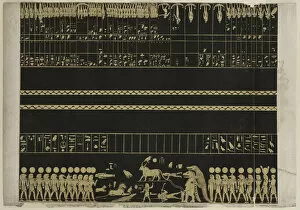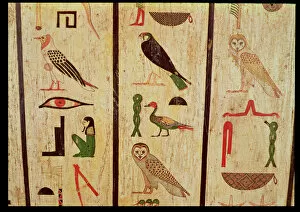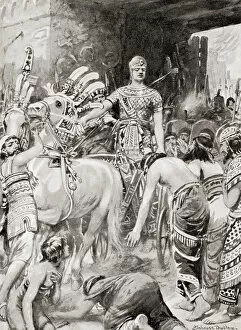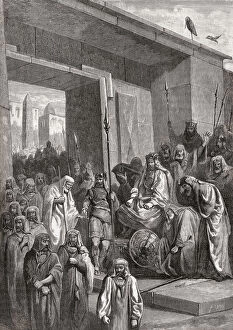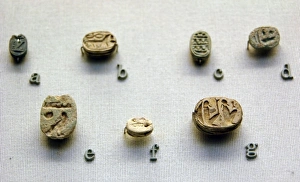Psammetichus Collection
Psammetichus, also known as Psamtik I, was a prominent figure in ancient Egypt during the Late Period
All Professionally Made to Order for Quick Shipping
Psammetichus, also known as Psamtik I, was a prominent figure in ancient Egypt during the Late Period. His legacy is preserved through various artifacts and illustrations that provide glimpses into his life and reign. One of the most notable relics associated with Psammetichus is his sarcophagus, crafted from painted wood. This intricately designed coffin housed his mummified body, symbolizing the belief in the afterlife held by ancient Egyptians. In addition to his burial chamber, a zodiac was discovered in the tomb of Psammis in Thebes. This celestial map offers insights into the astrological beliefs prevalent during that time. Psammetichus' interactions with other rulers are depicted in engravings such as "Cambyses and Psammetichus. " These artworks showcase diplomatic exchanges between leaders of different regions. Another engraving titled "Psammetichus and the bronze helmet" narrates an intriguing incident involving him at Hephaestus temple. It tells how he poured libations into his bronze helmet after being mistakenly excluded from receiving a golden phial during a feast attended by twelve kings. This act led to his exile to the Nile delta marshes due to an oracle's prophecy. The outer lid of Psammetichus' sarcophagus features intricate hieroglyphics that offer further insight into Egyptian religious beliefs and rituals surrounding death and rebirth. Artistic representations like "Cambyes and Psammetichs" depict historical events related to this ruler but were created much later, providing valuable visual records for historians studying this period. Faience scarabs dating back to 7th-6th centuries BC have been found within Isis Tomb in Italy. These small amulets served as symbols of protection or good luck charms during that era.



